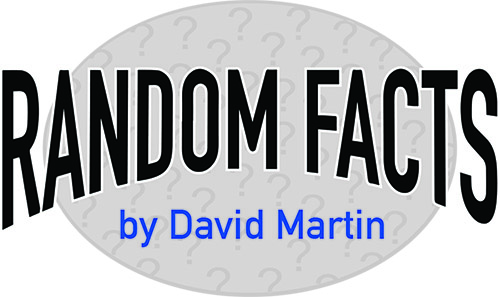By David Martin –
We opened our internet tubes for cleaning last week … and promptly fell asleep.
One of the wonderments of life is that we spend nearly a third of it in a comalike state while our minds conjure bizarre scenarios such as Audrey Hepburn as Holly Golightly pursuing us down a yellow brick road … or whatever your TMI dreams might be. Not only is sleep a wonderment, it is a necessity that ranks right up there with food and water.
To prove just how much of a necessity sleep is, a variety of scientists have devised diabolical experiments over the centuries to keep animals awake and see how they fare. In an 1894 experiment, 10 puppies were kept in constant, 24-hour motion until all the puppies died within five days, so that the Russian biochemist Maria Mikhailovna Manaseina, bless her heart, could declare, “The total absence of sleep is more fatal for the animals than the total absence of food.” Later experiments used constant, 24-hour dog walking or cages rigged with bells and nails. All these “scientific” experiments found that the animals died after a few days without sleep. Or was it the stress of the torture that killed them?
After 24 hours without sleep, humans will start hallucinating and showing symptoms of schizophrenia. It gets worse as the sleep deprivation continues: slurred speech, cognitive lapses, paranoia, and conditions that start to resemble psychosis. But you can’t deny yourself sleep to the point of death because your brain at some point will simply go to sleep regardless of your efforts to stay awake. Your brain will impose sleep through something called microsleep. Lasting between 10 seconds and a minute, microsleep is when the brain goes to sleep regardless of what the individual is doing. Eyes are open but the person is blind to the outside world. The person has no awareness or memory of the microsleep episode. The brain will not be denied.
According to Quanta Magazine, major disasters might have occurred because of sleep-debt effects such as microsleep: “The evidence shows that these [disasters] include the oil spill of the Exxon Valdez, the nuclear accidents at Chernobyl and Three Mile Island, and the loss of the space shuttle Challenger (Coren, 1996a).”
Human sleep has two major stages: Rapid Eye Movement sleep and non-REM sleep. During REM sleep, your eyes are moving like crazy but not sending any visual information to your brain; you’re dreaming; brain activity resembles that of a waking person; your muscles are locked so you don’t thrash around while dreaming in spite of what the movies show. NonREM sleep has three stages as you go into increasingly deeper states of sleep during which the body rebuilds and repairs major systems.
What the fancy pants scientists can’t tell you with any certainty is why we sleep. Some theories: sleep is an opportunity for the brain to clean toxins that have accumulated during the day; sleep is when the brain sorts through sensory data that has come in during waking hours, keeping what’s important and discarding what’s not (sorting through the random bits is what creates those vivid dreams); sleep promotes brain plasticity, which is vital to learning and memory.
The idea that we should get eight straight hours of sleep might be a construct of our postindustrial, postelectrical era. A more natural form of sleeping might be biphasic sleep or segmented sleep, which was practiced in preindustrial societies. People would go to bed when it got dark and would sleep four or five hours. Then they would awaken and spend a couple of hours in a variety of quiet activities — chatting among household members or even visiting with neighbors, reading by candlelight, using the toilet, praying, smoking, and, yes, having sex. Then people would go back to bed for another four or five hours of sleep. There are even references in the literature to the night’s first and second sleeps.
Some sleep researchers think this biphasic sleep is a healthier way of getting the hours of sleep we need. Or at least it’s the more natural way we humans have been sleeping for the majority of time we’ve been on Earth. So next time you wake up at 2 a.m., don’t fret about being an insomniac. You’re just naturally awake between the night’s first and second sleeps.



